#axis mater naturae
Explore tagged Tumblr posts
Text

#digital art#id ad art gabi zapf#www.id ad.art#photography#graphic art#nature#wall art#axis mater naturae#fantasy#lith-os#Sleeping Titan#Schlafender Titan
2 notes
·
View notes
Text
Assorted Pharos/Ryoji Thoughts
So, huh, don’t expect something too meaningful or conclusive for this. It’s quite literally just me rambling about the possible connections and influences Pharos and Ryoji have as they come. Quite messy, and it may not make much sense…
Phallus and Birds
As I said in my post about Nyx, Pharos’ japanese name (“ファルロス”) isn’t a word that exists. It’s a combination of “ファルス” (“Phallus”) and “ファロス” (“Pharos”, as in the lighthouse of Alexandria). The two of them mark him as the masculine aspect of the Star Eater (i.e., its psyche), while its body remains as the feminine or maternal one.
“In this sense, the concept of matter is also only one archetypal representation among many others; indeed the concept of matter derives from the archetype of the Great Mother. [...] The archetype of the Father, that is, of the mind, is the polar opposite.” - Psyche and Matter, by Marie-Louise von Franz.
This divide is important to make clear, since it harks back to one of the fundamental inspirations mentioned by the FES Fan Book: Jung’s childhood dream about “Father Phallos”. I’m not going to explain it since it’s somewhat long, but the gist is that it acted as one of the foundations of Jung’s work, as seen with Seven Sermons to the Dead:
“Spirituality conceiveth and embraceth. It is womanlike and therefore we call it mater coelestis, the celestial mother. Sexuality engendereth and createth. It is manlike, and therefore we call it phallos, the earthly father.” - Sermo V.
I'll not go into detail about what Jung exactly meant by “womanlike” or “manlike” beyond pointing out it is more akin to the Yin and Yang division, but through western or hermetic lens.
While the parts of sexuality and creativity are better represented by Ryoji for obvious reasons, the identification between Pharos and Father Phallos is still important because it points to the former’s future as the “son” or avatar of “Dea Luna Satanas”.
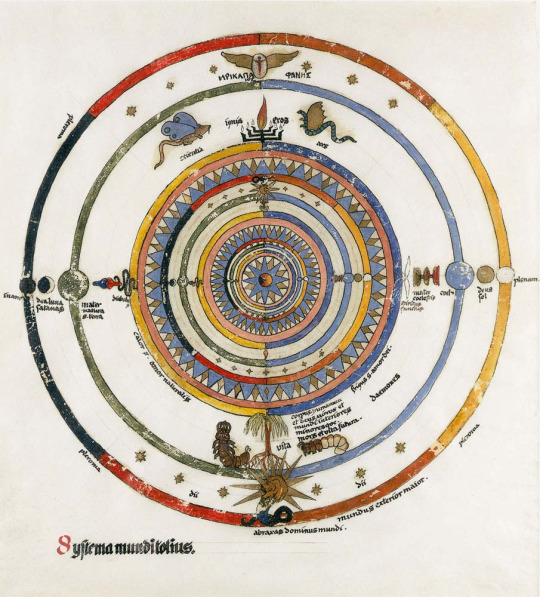
I'm putting Systema Munditotius here again because it’s a graphical summary of the cosmology and psychological principles presented in Seven Sermons, showing how the human mind is a whole that encompasses all dualities. But instead of focusing on the vertical axis this time, I will explain the horizontal one, where we can see:
The Emptiness (the black circle named “Inane”) at the leftmost extreme, whose dissolving and destructive capacities are manifested in the figure of “the Devil”, represented by the waxing moon—the so-called “Dea Luna Satanas” or “Goddess Moon Satan”.
The Fullness (the white circle named “Plenum”) at the rightmost extreme, with its creative capacities manifesting in the golden circle called “Deus Sol”, the Godly Sun.
Now, despite the presence of another Devil-like figure in the series (Nyarlathotep, with the japanese version of Eternal Punishment directly calling him “the archetype that destroys humans' egos”), it’s undeniable the connection between Nyx as the moon and, well, the lunar Satan described in the Sermo IV:
“The dark gods form the earth-world. They are simple and infinitely diminishing and declining. The devil is the earth-world’s lowest lord, the moon-spirit, satellite of the earth, smaller, colder, and more dead than the earth.”
And that’s where the other half of the left side enters: the Devil-Moon is the root of everything that’s “physical”, the “visible” and “sensual” spirits of earth (the green circle named “Mater Natura”) that manifest through the sexuality of the Phallos, who lies in the “depths of the earth” according to Jung’s dream—in the unconscious, with the Dark Hour being a symbol of it. That’s to say, Father Phallos and thus Pharos are the result of the countless souls that are attached to earth, of people dead in spirit and alive in bodies—of the Lost, and those who transmogrify each night, and those who have lost all hope.
However, unlike Pharos, the Avatar doesn’t show many “sensual” details, despite the entire Fool’s Journey it/he recited being a perfect metaphor of the earthly/gross side of life (i.e., you are born, you grow, you die); on the contrary, it presents a couple of celestial characteristics. The meaning of these properties lie on the other half of the right hemisphere, in the heavenly sphere that the wise kin of the Sun inhabits, communicating with the receptive nature of the human soul (or Celestial Mother) in the form of a white bird—the Holy Spirit.
“The white bird is a half-celestial soul of man. He bideth with the Mother, from time to time descending. The bird hath a nature like unto man, and is effective thought. He is chaste and solitary, a messenger of the Mother. He flieth high above earth. He commandeth singleness. He bringeth knowledge from the distant ones who went before and are perfected. He beareth our word above to the Mother.” - Sermo VI.
Yet, due to Nyx’s body being a shadowy reflection of the Heavenly Mother, it’s to be expected the Bird too becomes twisted, from a pure white dove into a pitch-black crow. There’s no need to go over all the references to black birds during the game, from Tartarus to Nyx Avatar—the messenger or angel of Nyx.
So, on one side we have Death as a Shadow, primitive and all-consuming, and on the other we have Ryoji, a conscious being filled to the brim with love and energy. Pharos is, then, the in-between, the liminal state between consciousness and unconsciousness, a baby that’s trying to break free from the grip of the unconscious’ womb, yet joins the divine with the mortal.
“The "child" is born out of the womb of the unconscious, begotten out of the depths of human nature, or rather out of living Nature herself. It is a personification of vital forces quite outside the limited range of our conscious mind; of ways and possibilities of which our one-sided conscious mind knows nothing; a wholeness which embraces the very depths of Nature.” - Archetypes and the Collective Unconscious.
Be it from Nyx or the protagonist/Makoto himself, Death/Pharos/Ryoji, from the moment his being was fragmented, sought separation and division, to know where his essence began and ended. He was trying to create himself. That’s the most beneficial manifestation of the Phallos: the birth of a “sun” or (primitive) consciousness through the active energy of the unconscious.
“The psychic life-force, the libido, symbolizes itself in the sun or personifies itself in figures of heroes with solar attributes. At the same time it expresses itself through phallic symbols.” - Symbols of Transformation.
An event comparable to the separation of the waters through the spirit (or dove) of God himself, or to the eating of the fruit of knowledge upon the serpent’s goading. That’s to say, a manifestation of the beginning of individuation, the development of the—his—Self out of the unconscious’ waters.
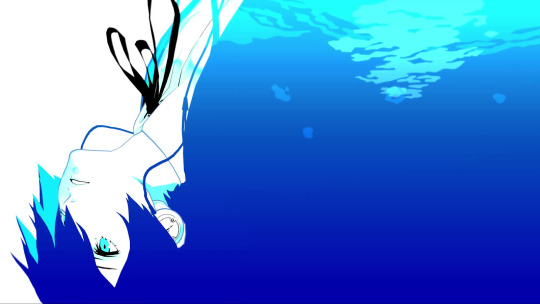
Introversion and Extraversion
Makoto is introverted and Ryoji extraverted.
…
Okay. That isn’t something new, like, at all. But it’s a good start, since I’m not referring to the popular conception that we have of introversion and extraversion, but to the jungian one, explained in Psychological Types:
“The introvert’s attitude is an abstracting one; at bottom, he is always intent on withdrawing libido from the object, as though he had to prevent the object from gaining power over him. The extravert, on the contrary, has a positive relation to the object. He affirms its importance to such an extent that his subjective attitude is constantly related to and oriented by the object.”
I went into a deeper explanation in my post about Philemon’s and Nyarlathotep’s Types, but the above is the main idea: the introverted individual focuses inwards, in the inner realm of the universal “subjective factor” or unconscious, and the extraverted individual focuses their energy into the external world and its objects, relating to the present. As a compensatory method, the differentiated attitude of consciousness will be opposed by the acquisition of the contrary attitude within the unconscious, giving rise to psychic wholeness and certain peculiarities that, for the moment, aren’t important.
Now, with that out of the way, I want to focus on a particular scene described by the book, about an interpretation of Spitteler’s “Prometheus and Epimetheus”, with Jung concluding that the brothers are representations of introversion and extraversion respectively:
“For just as Prometheus makes all his passion, his whole libido flow inwards to the soul, to his innermost depths, dedicating himself entirely to his soul’s service, so God pursues his course round and round the pivot of the world and exhausts himself exactly like Prometheus, who is near to self-extinction. All his libido has gone into the unconscious, where an equivalent must be prepared; for libido is energy, and energy cannot disappear without a trace, but must always produce an equivalent. This equivalent is Pandora and the gift she brings to her father: a precious jewel which she wants to give to mankind to ease their sufferings.”
Prometheus parted ways with the outer world to focus completely on his soul, the realm of the unconscious and his Anima. Understanding that libido can be symbolized by fire, light and heat, then Prometheus’ actions can be interpreted as he trying to “incubate” the treasure that lies deep within, which is compared in other parts of the book with the dharmic tapas or meditation, and the birth of the Buddha, one of the “three jewels”… The underlying meaning of the scene should be obvious at this point.
“The moon with her antithetical nature is, in a sense, a prototype of individuation, a prefiguration of the self: she is the “mother and spouse of the sun, who carries in the wind and the air the spagyric embryo conceived by the sun in her womb and belly.” This image corresponds to the psychologem of the pregnant anima, whose child is the self, or is marked by the attributes of the hero.” - Mysterium Coniunctionis.
A renewal of the Sun, who is no other than Pharos/Ryoji himself. Or do you think the sobriquet of Saturn, the Persona unlocked through his Linked Episodes, is for nothing?
Just like the maternal Nyx holds the golden, cosmic egg inside its body, Makoto incubates within him the seed of a new life, enveloping it/him just like the ocean does with all sorts of primitive life forms. This is not surprising considering that introversion is the “feminine” (or “ying”) attitude, and that Makoto was, in fact, described as the mother of Pharos in the Club Book (Thanks to elle-p for pointing it out!).
But I think there’s something much more interesting in how Makoto “incubated” Ryoji, because just like the moon, as a symbol of the Anima, carries “the child of the sun”, Prometheus makes his libido flow towards his soul… or Anima. That’s to say, both Makoto and Ryoji, at some level, represent each other’s Anima, the sexual counterimage to consciousness that mediates the collective unconscious.

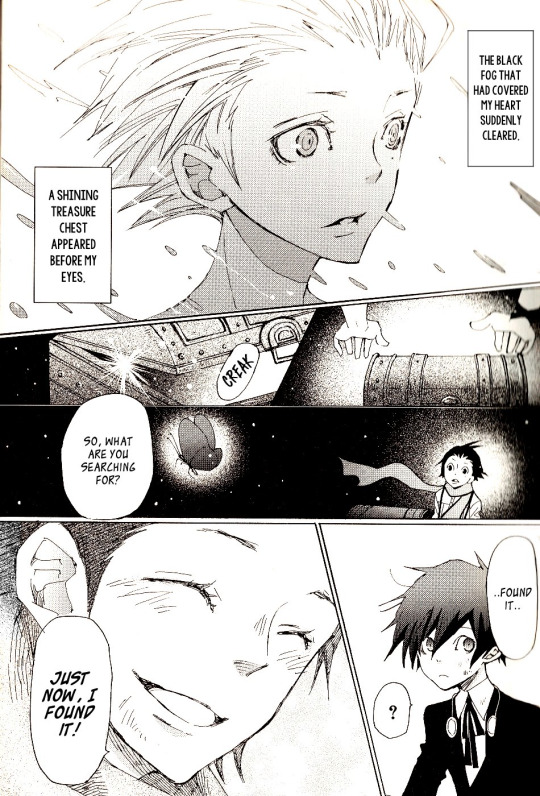
(While technically a non-canon portrayal of things, I still think it fits here :) After all, we know butterflies represent the souls of individuals in the series)
It’s not a perfect correlation naturally; the soul-image is that of the opposite gender of consciousness, to balance the psyche. But the mirror idea is the basis of their relationship, with Ryoji and the protagonist playing each other’s attitudes. The movies are more explicit with this, and there’s a particular quote I really hold close to my heart:
“綾時は理の対極にいるようなキャラクターです。物静かな理と社交的な綾時は"静と動"の関係であり,彼らの対比第3章の物語に欠かせない視点をもたらしています” - Keitaro Motonaga, Persona 3: Falling Down Pamphlet.
“Ryoji is a character that feels like the opposite of Makoto. The quiet Makoto and the sociable Ryoji have a relationship of ‘stillness and motion’, and their contrast brings about an indispensable perspective in the third chapter of this story.”
The connections are clear: Makoto is an introverted sensor (ISxx), and Ryoji is an extroverted intuitive (ENxx). And if we really break down their character, Makoto is an ISFJ (overall ISFx, with the J/P depending on the particular media) and Ryoji an ENFP, which is pretty damn close to a mirror match! You can compare them with Elizabeth, who is likely an ENTP.
Anyway, what’s more interesting in Ryoji’s Type is how it’s described on Psychological Types, under the “Extraverted Intuitive” section:
Going from object to object and situation to situation, never satisfied with the current circumstances staying the same.
That applies to people too, how they can go from adventure to adventure in search of romance.
Thanks to the enthusiasm they hold for what is next, they are able to inspire others as well.
Their unconsciousness is mainly governed by an archaic Sensation directed towards introversion, which means their blind spot corresponds to the endosomatic part of the senses, manifesting as strange and absurd sensations (which yes, it can include perceiving the world as dream-like).
And since Ryoji is a feeler as well, all those characteristics acquire a romantic tinge, seeing things by what they emotionally mean instead of what they (sensually) are. Does it sound familiar? Metaphors about flowing water maybe? You can quite literally do one of those school homeworks of joining columns with those points and Ryoji’s characterization.
Another interesting thing to consider is the contrastive relation between Ryoji’s and Makoto’s Types, which returns to my previous point of Ryoji being incubated through Makoto’s introversion, because he’s the personification of Makoto’s unconscious functions. The only exception is Ryoji being an extraverted feeler (ExFx) instead of an extraverted thinker (like with Elizabeth again, or Metis), but I still think it fits with Edogawa’s explanations in P4G:
“However, it's not impossible that you might have picked it. The other path was certainly a logical choice. Your Shadow is the path that you didn't take. In other words...It is another you. The Shadow is the ‘you that wasn't picked.’”
Through his fear and trauma, Makoto withheld all the “heat” he could have vested life with inside his soul, warming and breathing life into the seed that was sealed within him. But whereas the Shadow merely personifies that repressed libido and possibilities, Ryoji became human only through living them—he didn’t only embody Makoto’s repressed yearnings and sufferings, but made them his own. This returns once more to the jewel of Pandora that doesn’t solely belong to Prometheus (i.e., Makoto), but to the whole world.
“hell: a name for the *prima materia, the *black colour which appears during the *putrefaction of the matter of the Stone at the *nigredo, the torture through which the ‘body’ of the Stone passes while being dissolved by the secret fire. [...] The nigredo stage is also known as ‘Tartarus’. During the process of the nigredo the colour of the putrefaction is said to be as black as pitch, and the shades of hell appear. A profound blackness reigns both over the matter in the alembic and over the alchemist who may experience the torments of hell while witnessing the shadow or underworld of the psyche.” - A Dictionary of Alchemical Imagery, by Lyndy Abraham.
There’s no need to explain why Tartarus and the Dark Hour are the unconscious, but I’ve to in regards to how they represent Makoto’s “stagnant hell” and their relationship with alchemy.
Fire and Motion
According to the same book I quoted before, “A Dictionary of Alchemical Imagery”, towers in general can be interpreted to be symbols of the alchemical alembic, the main instrument through which the alchemists try to create the philosophers’ stone. However, alchemy is both an outer and inner discipline, so the tower isn’t merely a symbol for the external instrument, but also for the inner one: the human soul, which is put through hellish heat to purify it. Thus, towers, hell, and the individual become synonyms for the same alchemical instrument of transformation, fueled by the “secret” or “inner fire” that, in this case, corresponds to Makoto’s libido.
If we follow the normal alchemical process, then Death/Ryoji should be equal to the prima materia or the first matter used to create the Stone. But since the Stone is a symbol of the Self, the presence of Ryoji is iffy unless we, instead of thinking of him as the actual goal of alchemy, interpret him as the “secondary” goal, as gold itself, the mineralized/gross essence of the sun.
“But when the alchemists speak of gold they mean more than material gold. In the microcosmic-macrocosmic law of correspondences, gold is the metallic equivalent of the sun, the image of the sun buried in the earth. The sun in turn is the physical equivalent of the eternal spirit which lodges in the heart (the ‘sun’ of the human microcosm).” - A Dictionary of Alchemical Imagery.
This is a topic I already explained previously, since “sun = life = libido = phallus”, corresponding to the masculine/yang/extraverted side of things. As I previously noted on Nyx's post, one can see all of these connections through Ryoji’s infamous yellow scarf that represents the golden color—Nyx's core—of the final battle according to the Design Works (again, thanks to elle-p for pointing out that indecipherable text!), decidedly marking him as a product of Makoto’s inner work—as his “mineralized” life-energy.
But to describe Ryoji as purely gold would be incorrect; he’s far from being a pure manifestation of the incorruptible essence of the sun. His true nature is pointed by, again, the final Persona of his Linked Episodes, Saturn, the black sun.
“This power is called ‘sulphur.’ It is a hot, daemonic principle of life, having the closest affinities with the sun in the earth, the “central fire” or ‘ignis gehennalis’ (fire of hell). Hence there is also a Sol niger, a black sun, which coincides with the nigredo and putrefactio, the state of death.” - Mysterium Coniunctionis.
It’s darkness itself, the stagnation of life and its energy that leads to the state we see in the Dark Hour: putrid and rotten to the core, stagnated and filled to the brim with the dead and lost in life. It’s the collective “dark night of the soul”, the nigredo stage of alchemy of all humanity that can only be overcome by setting the world in fire, the element of motion and change that makes the clock advance with each full moon and each cleared floor in Tartarus, for better or worse. The transformation of Death into Ryoji is just the repetition of such a process at the individual level.
And if all of that sounds familiar, it should be! That’s the fundamental meaning of both the Fortune and Death arcanas, representing the nature of life as endlessly changing to represent its wholeness. Thus, life stagnating and “becoming a void” is a paradox that must be solved by reigniting its motion/change, lest it collapses into itself.
“This card is attributed to the letter Nun, which means a fish; the symbol of life beneath the waters; life travelling through the waters. [...] In alchemy, this card explains the idea of putrefaction, the technical name given by its adepts to the series of chemical changes which develops the final form of life from the original latent seed in the Orphic egg.” - Book of Thoth, by Aleister Crowley.
The Death arcana is that hellish fire that puts people under the most unbearable pain to put things in the correct path once more. Due to that, it has three “manifestations”: the scorpion that kills itself when finding itself surrounded by fire; the serpent that renews itself through its shedding, crawling and thus still attached to earth; and the eagle, the spirit of life that soars the sky, unbounded by and embracing change at the same time. Yet, Death as a Shadow represents the contrary, the stagnated core of the Dark Hour that leads all to its destruction and that must be burned—killed and resurrected
Alchemy is necessarily a violent process, because it requires the constant death and union of the elements so they can be perfected. In Death’s case, its alchemical work began from the moment it was separated/“killed” and sealed in Makoto, who is a stand-in for the maternal womb, the alchemical vessel, and the mercurial waters that dissolve the murdered element. Yet, as the alchemist himself, Makoto also pours his own life and heat into the dissolved Shadow to unify and resurrect it in a new, purer shape: Pharos, the creativity of a nascent sun, the seed of a new life.
(By that matter, Nyx crashing against earth follows a similar pattern: the original being is mutilated and “dissolved” through the alambic—the primordial hadean earth. The broken egg or core is an image that has the same meaning as the separation of Death; both fall under the dismemberment motif of alchemy)
But then, how does all of this relate with Saturn? Well, it’s because Saturn has a really long history in hermeticism, alchemy, and astrology: “he” represents the outermost and heaviest planet of all, embodying the limitations and structure of the universe such as time and death, devouring nature to rebirth it once again. Furthermore, the planet is associated with none other than lead, the heaviest metal that’s commonly used as a metaphor for the first matter, the moribund nature that… well, it should be obvious what one must do.

And funnily enough, just as fire is the element of transformation and renewal, Intuition in general corresponds to the function that oversees the dynamic elements of reality. It perceives the relations and motion between external/internal objects. So in more than one sense, Ryoji is the inner fire/spirit of Makoto. However, since alchemy deals with opposites and due to his nature as the black sun/saturn, there must be a limiting element in nature to restrain his ever-expanding/intuitive nature…
The Bonds of Death

Why a scarf? Why not another piece of cloth or even jewelry? Well, the image above answers why: a scarf is no different from a noose, one of the most common elements of death deities and grim reaper figures around the world, for what’s death but a hunter of humans? Thus, Ryoji’s scarf is a symbol of how even himself is bound to death, to his underlying nature.
“The difference seems to be due to the repression of real sensations. These make themselves felt when, for instance, the intuitive suddenly finds himself entangled with a highly unsuitable woman—or, in the case of a woman, with an unsuitable man—because these persons have stirred up the archaic sensations.” - Psychological Types.
I can hardly argue in favor of the “unsuitable” part, but there’s no need to really explain the other one, right? Déjà vu and all. That’s the “magical” part of Introverted Sensation, which transforms the sensed objects into symbols of the collective psyche through impressing it onto them. And in case of inferior Sensation, as presented above, those filtered sensations become “effective entities” on their own right since the archetypal forces of the unconscious control them, possessing them even. This strengthens the idea of Ryoji’s attraction being rooted not only in the forgotten or unconscious memories of when he was Pharos, existing in a liminal state between consciousness and unconsciousness, but also points to how those memories are themselves mixed with archaic, mythological imagery, and that only has one source.
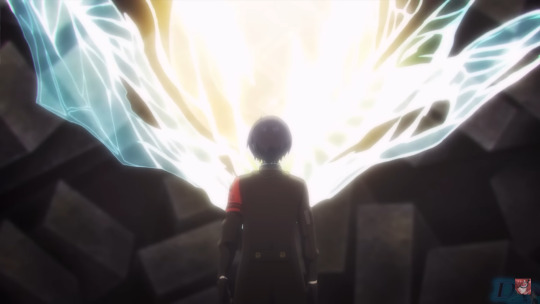
The protagonist is Ryoji’s alchemist and thus an equal to his mother, a reflection of Nyx as Death’s mother, the black ocean from which the transmuted golden egg (or seed) was extracted. This relationship is also pointed out by the fortune teller in club Escapade during January, explaining how “nothingness is the other face of the infinite world/universe”, ultimately hinting at the same thing I explained through the inferior Sensation: the oneness between the figure of Nyx and Makoto (understanding him as a symbol for all humanity).
In particular, I think the image above is perfect for this, since not only Nyx’s core and Makoto are (close to be) superimposed with each other, but also due to the black spiral in the background. The spiral also appears on the Great Seal’s surface, and within this context I have to quote Jung once more:
“We can hardly escape the feeling that the unconscious process moves spiral-wise round a centre, gradually getting closer, while the characteristics of the centre grow more and more distinct. Or perhaps we could put it the other way round and say that the centre—itself virtually unknowable—acts like a magnet on the disparate materials and processes of the unconscious and gradually captures them as in a crystal lattice. For this reason the centre is (in other cases) often pictured as a spider in its web (fig. 108), especially when the conscious attitude is still dominated by fear of unconscious processes.” - Psychology and Alchemy.
The book and even the own paragraph goes on to say that the “centre” is the Self (along with a noteworthy mention of the orphic egg again). But more importantly is the mention of the web here, representing consciousness’ fear of joining into the endless spiral that moves around without end, and its connection to the first kanji of Ryoji’s name: “綾”, which means “twill weave” or a “pattern of diagonal stripes”, a textile element that shouldn’t be so different from a web. Needless to say, all of that is connected to the figure of the alchemist/crafter and that of a mother.


The scarf in the first image, due to the fetal position of Ryoji, can be read as an umbilical (normally red) cord connecting him to Makoto/the mother, while the second is a little more explicit with the association to the red thread of fate—and what other fate there’s but death? Ryoji’s inherent connection to Death and Nyx is expressed through the “golden cord” that his scarf is, which can also be read as a noose, and as a manifestation of the inferior Sensation, the static element that eternally joins him to his source.
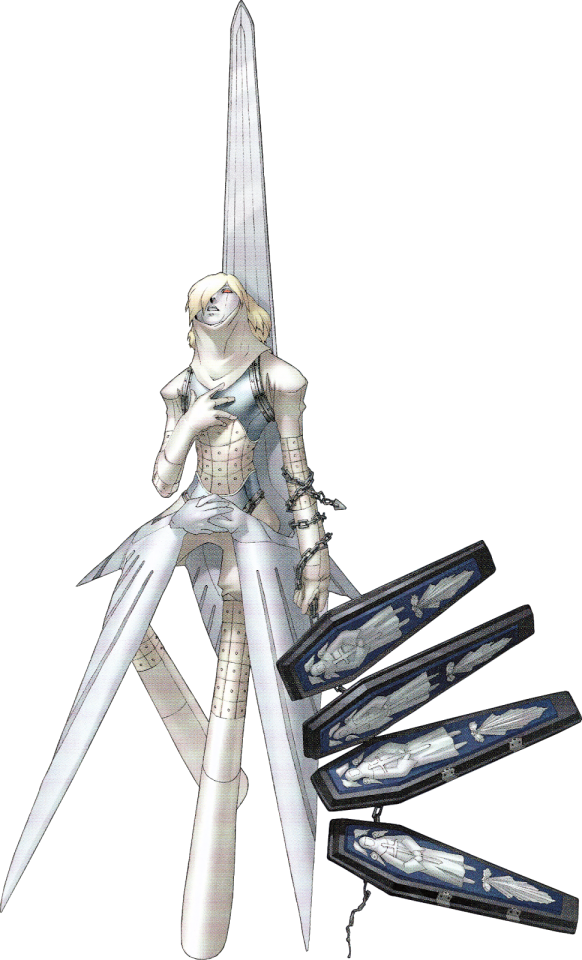
(Scan uploaded by Vesk)
Even the final resolution of Ryoji and Makoto, the white stone and pure dove incarnated, can’t abandon the chain that binds them to death and its hellish fire. However, this time is a willing acceptance of its existence, holding it with one’s hand instead of letting it strangle the individual unconsciously. Even the hands at the waist are holding each other gently, representing the final union of the “lovers” at the top of the alembic—at the top of Tartarus—in the form of a winged spirit.
“The united bodies of sulphur and argent vive, usually symbolized by a pair of lovers, are killed, dissolved and laid in a grave to putrefy during the stage known as the *nigredo. Their souls fly to the top of the alembic while the blackened *hermaphroditic body is sublimed, distilled and purified. When the body is cleansed to perfect whiteness it is then reunited with the soul (or united soul and spirit).” - A Dictionary of Alchemical Imagery.
Death is fate indeed, and in that fire, change and life. It’s the ultimate fetter that no one can go against, let alone the immortals that do not fear it.
#persona 3#persona 3 spoilers#ryoji mochizuki#makoto yuki#persona 3 protagonist#thematic analysis kinda?#there's a lot more I could comment here#specially in relation to his relationship with junpei since both of them are “red”#but I think this enough for the moment
35 notes
·
View notes
Text

#digital art#id ad art gabi zapf#www.id ad.art#photography#graphic art#nature#wall art#axis mater naturae#fantasy#Metalic-Os
3 notes
·
View notes
Text

#digital art#id ad art gabi zapf#www.id ad.art#photography#graphic art#nature#wall art#axis mater naturae#fantasy
0 notes
Text

#digital art#id ad art gabi zapf#www.id ad.art#photography#graphic art#nature#wall art#axis mater naturae#fantasy#METALIC-Os#Leo Perplexus
0 notes
Text

#digital art#id ad art gabi zapf#www.id ad.art#photography#graphic art#nature#wall art#axis mater naturae#fantasy#infinity shield
0 notes
Text

#digital art#id ad art gabi zapf#www.id ad.art#photography#graphic art#nature#wall art#axis mater naturae#paper scraps#foil scraps
0 notes
Text

#digital art#id ad art gabi zapf#www.id ad.art#photography#graphic art#nature#wall art#axis mater naturae#fantasy#Metalic-Os#King of Ants
1 note
·
View note
Text

#digital art#id ad art gabi zapf#www.id ad.art#photography#graphic art#axis mater naturae#wall art#fantasy#Infinity Shield#Bronze Shield
1 note
·
View note
Text

#digital art#id ad art gabi zapf#www.id ad.art#photography#graphic art#wall art#axis mater naturae#fantasy#Infinity Shield#Diamond Cross
1 note
·
View note
Text

#digital art#id ad art gabi zapf#www.id ad.art#photography#graphic art#axis mater naturae#fantasy#wall art#metalic-os#metal faces
1 note
·
View note
Text

#digital art#id ad art gabi zapf#www.id ad.art#photography#graphic art#nature#wall art#axis mater naturae#fantasy#Metalic-Os#Metal Faces#Cyborg
0 notes
Text

#digital art#id ad art gabi zapf#www.id ad.art#photography#graphic art#wall art#axis mater naturae#fantasy#infinity shield
1 note
·
View note
Text

#digital art#id ad art gabi zapf#www.id ad.art#nature#photography#graphic art#wall art#axis mater naturae#lith-os#Calendar 2025#Calendar
0 notes

